In this post, we will go over the benefits of cover crops and green manure crops and we’ll learn how we can plant them in the vegetable garden to improve the soil and control weeds. We’ll learn what cover crops are, how they can help us add nitrogen to the soil, some methods of using cover crops, how to choose the right cover crops for your garden, and more. If you’ve ever wondered what the benefits of cover crops and green manure crops are and how you can use them, this post is for you! Let’s get started…
I love mulch. I use wood chips on my walkways between my garden rows and I use straw mulch on the vegetable beds between the plants.
I started mulching my garden years ago. At first, I did it because I wanted to find a way to get rid of weeds since weeding in the middle of the summer when it’s 100F outside is obviously not one of my favorite activities.
But very quickly I noticed the many other benefits of covering the ground. My soil became so much richer, darker, full of worms and microorganisms, it held water much better, I didn’t have to add compost, and I had to spend very little time weeding.
A few years ago, I decided to grow a larger garden for the market. I automatically assumed that the best thing would be to just expand my small garden operation and do things the same way as I did in my small home garden.
So I set up my 66 garden beds on our farm and after preparing the soil I covered the whole thing with many bales of straw that cost me a good fortune.
Benefits of Cover Crops and Green Manure Crops…
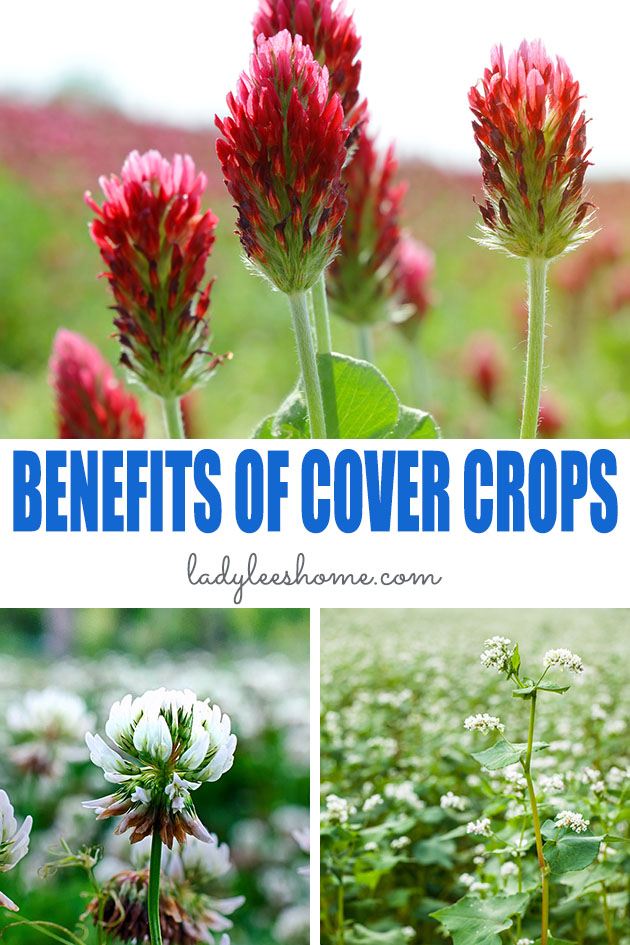
I soon realized what a huge mistake I’d made. It was impossible to do the work with so much straw everywhere. I couldn’t use a seeder, the weeds that did come through the hay took me hours to clean (since I couldn’t use a hoe), and at harvest time the straw was constantly in my way and I had to spend hours cleaning my harvest so I didn’t go to market with bags of lettuce mix full of hay in them.
I am not saying it’s not possible to garden on a larger scale with straw as mulch, it probably is, but I felt like for me it was too expensive and time-consuming.
However, since I still didn’t want to leave my soil bare, I started researching other alternatives…something that would work on a larger scale.
I’d heard about cover crops and green manures before I set up my market garden. Even though I didn’t know the specifics, I knew that there were many benefits to cover crops, I just never dug deep since my home garden space back then was so small and I was doing great preparing my garden beds without tilling and with straw as mulch.
Since the straw didn’t work for me in a larger garden set up, I started researching. To tell you the truth, I was a bit overwhelmed with the amount of information, practices, the number of cover crops available and so on…
So I am writing this for you and for myself. I am going to organize this whole cover crops topic in my head and share my research with you.
Since that year of farming for the market, I realized that I don’t really need a huge garden. Even with a much smaller garden than the one I set up back then, I am still able to go to our farmer’s market a few times a year. If you take good care of your plants they will be very productive.
But I still own 20 acres. 7 of them are clear and I want to make sure that even though I don’t produce anything there at the moment, I take care of my soil and improve it. This way, when I am ready to plant vegetables or herbs or whatever, my soil is ready to go.
I also love that many cover crops provide food for the bees and other beneficial pollinators. It’s simply beautiful to grow a field of red clover and watch it buzzing with life.
And, of course, I still have my vegetable garden! It might not have 66 beds in it anymore but it’s much larger than it used to be. I want to emphasize that you don’t have to be a farmer to use cover crops. You can incorporate cover crops in any size garden, you’ll soon see how they can benefit even your small-scale vegetable production.
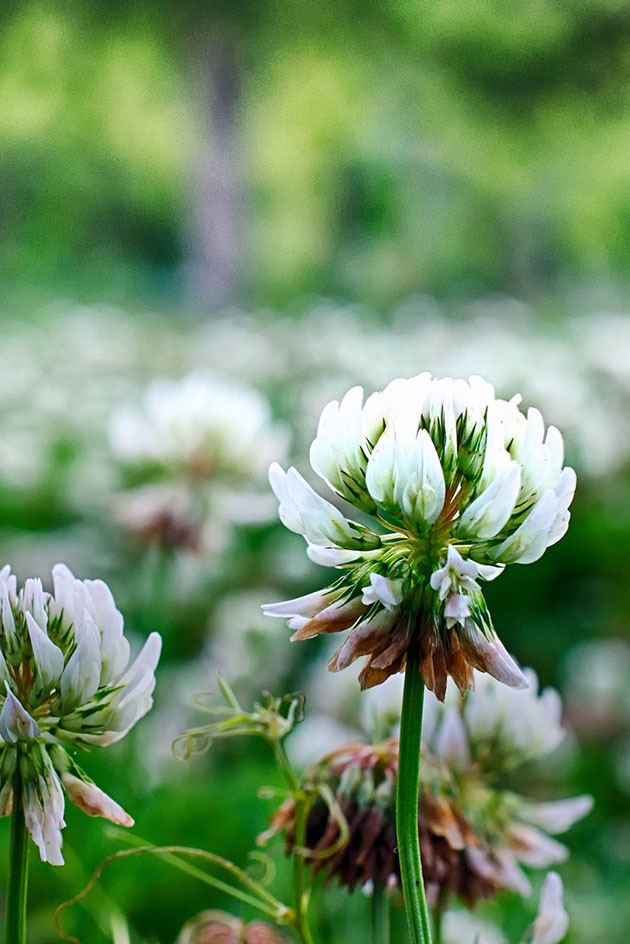
What are Cover Crops and Green Manure Crops?
Cover crops and green manure crops are crops we grow to improve the soil. They usually aren’t used to pasture livestock (although there are some exceptions) and aren’t sold as cash crops.
Green manure crops are cover crops we plant with the intention of incorporating (usually by tilling) them into the soil while the plant is still green and before it sets seeds.
A cover crop, on the other hand, can be mowed and incorporated (or not, we will talk about this later) into the soil at any stage.
So whether a crop is a cover crop or a green manure crop depends on how a farmer is going to use it rather than which specific crop it is. Is he going to leave it to cover the ground for a long period of time? Or is he going to till it under while it’s still green?
To make it easy on all of us, I am going to use the term cover crop through this post since it’s a bit broader.
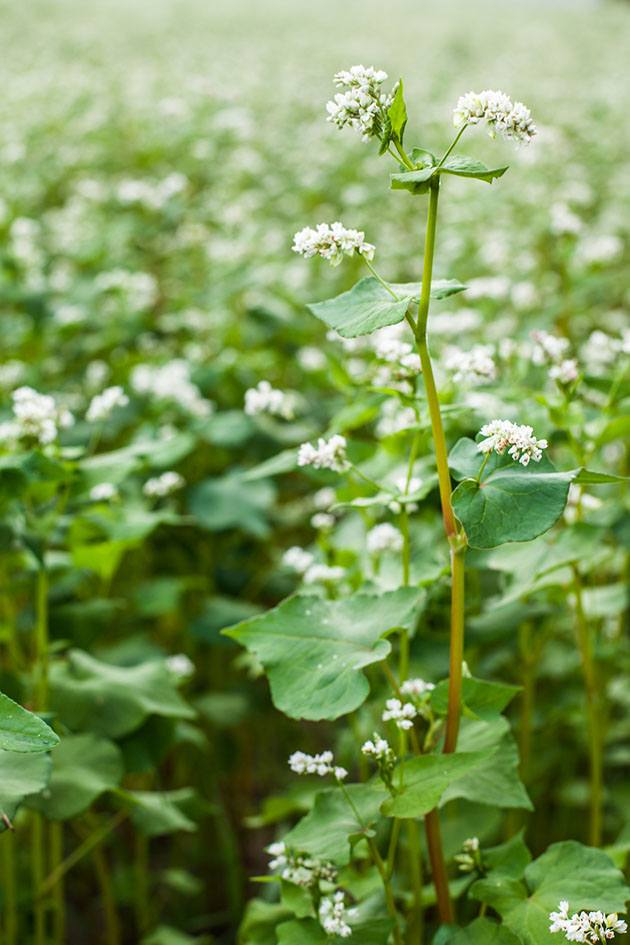
Benefits of Cover Crops…
There are many benefits to using cover crops in your garden or farm. Let’s go over a few of the benefits of cover crops…
Prevent Erosion – the USDA explains erosion as…
“the breakdown, detachment, transport, and redistribution of soil particles by forces of water, wind, or gravity. Soil erosion on cropland is of particular interest because of its on-site impacts on soil quality and crop productivity, and its off-site impacts on water quantity and quality, air quality, and biological activity. Cropland includes cultivated and non-cultivated cropland.”
More on Erosion here.
Even though rates of erosion have declined in the past few years we are still losing about 1.7 billion tons of topsoil to erosion every year.
Roots of cover crops hold the soil together and help protect it from water erosion. The upper part of the plants covers the soil and prevents wind from carrying away dry topsoil.
Prevent the Loss of Nutrients – nutrients in the topsoil can be lost to erosion, however, this is not the only way nutrients can be lost. They can also leach down below plant root level which makes them unavailable for plants. Cover crops, or in this case they can also be called catch crops, capture and hold those nutrients.
When they die and decompose, those nutrients are returned to the top level of the soil.
This process also helps keep our water sources clean. Excess nitrogen, phosphorus, and other plant nutrients (even though natural) can have a negative effect on water if they leach into ponds, rivers, lakes, and streams. Catch crops hold excess nutrients in the soil.
Add Organic Matter to the Soil – at some point, cover crops are tilled back into the soil or mowed and left on the soil to decompose. Once they break down, they add a great amount of organic matter to the soil. In addition, they provide a great amount of food for the trillions of organisms that live in the soil.
Add Nitrogen and Cut Fertilizer Costs – this is another good reason to use cover crops. Last year, I bought a few bags of organic fertilizer and learned just how expensive it is. If you have a large garden, or if you farm a few acres, it adds up to a lot of money.
Leguminous cover crops (clover, beans, peas, vetch, soybeans, and alfalfa, for example) have the ability to capture nitrogen from the atmosphere and store it in nodules in their roots.
Once those plants die and decompose, they release nitrogen back into the soil. This nitrogen is easily available and very valuable for the subsequent crops. Although this nitrogen might be tied up by soil microbes for a while. When those microbes die, they release the nitrogen. This process will move along faster in warm, moist soil.
So, by using leguminous cover crops, and because cover crops, when decomposed, add so much organic matter to the soil, they can significantly reduce or even eliminate the need to purchase organic fertilizers and compost.
Suppress Weeds – some cover crops are very good at suppressing weeds. Some crops grow very fast and pretty much monopolize the supply of nutrients, water, and sunlight.
Other cover crops (winter rye, oats, sorghum, and sudangrass) produce toxic compounds that prevent other seeds from germinating and slowing the growth of nearby plants. This is called ‘allelopathy’.
Keep in mind that those cover crops affect vegetables just as much as they affect other plants, so waiting a few weeks (3 or so) before planting after tilling under those crops is a good idea.
Break Up Compacted Soil – some cover crops are very deep-rooted. Their roots are capable of penetrating deep into subsoil levels, breaking up dense layers.
Another advantage here is that those cover crops reach nutrients and minerals cash crops can’t reach. Those minerals and nutrients become available to other crops once the cover crop decomposes.
Attract Beneficial Insects and Fight Pests – many cover crops, especially the ones that flower (clover and buckwheat for example), provide habitat for beneficial insects. Those, can not only fight pests but also help with pollination.
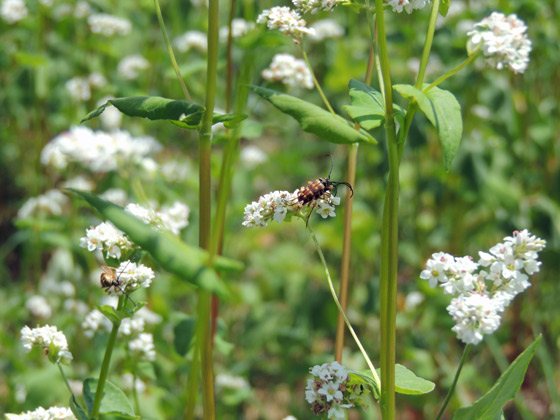
Methods of Using Cover Crops…
There are a few methods of using cover crops, the method you choose depends on your main goal and the kind of cover crop you are using. But you don’t have to choose just one. You can incorporate more than one method.
Planting, Mowing, Tilling Under – you’ll do this when you need a crop to cover the ground before the next cash crop is ready for planting.
For example, at the end of the season, you plant your beds with a winter cover crop. This crop will protect and cover the ground all winter long. In early spring, you mow the cover crop and till it under.
Give it a few weeks to decompose and add organic matter to your soil before planting lettuce, carrots, or whatever else.
Planting, Mowing, Planting – this is similar to the above method, but instead of tilling the cover crop under, you plant your seeds right into the mowed down cover crop. The cover crop is now acting as mulch.
This is a great idea but in order to make this happen if you are planting a field, you have to have a seed drill. If you want to see how farmers do this, watch Under Cover Farmers below, it’s quite amazing.
If, on the other hand, you have a smaller garden, you can plant your plants by hand. Let’s say you planted ryegrass in the fall so your soil is covered during the winter, in the spring, mow down your grass and use a post hole digger to plant your tomatoes and peppers in between the ryegrass.
Green Manure – if you are going to use a cover crop as green manure, you most likely are not going to let it grow in the field for months. This will be a quick growing crop that you will till under while it’s still green and before it goes to seed.
For example, you plant lettuce and carrots in early spring and harvest all of them by the beginning of June. You want to keep this bed (or rows or area of your garden…) available for fall planting in August but instead of leaving the ground bare, you plant buckwheat.
The buckwheat will germinate, grow, and flower within four weeks. You let it flower for a week, and before it goes to seed you till it under. Give it three weeks to decompose before planting fall crops.
So instead of letting your soil stand bare and dry in the sun, you covered it, attracted beneficial insects (the flowers of the buckwheat are a bee magnet), and you added organic matter to the soil before the next planting. Makes much more sense, doesn’t it?
Interseeding – this is also called overseeding or undersowing as well. Let’s say you have a few rows of lettuce planted (or whatever else). The walkways are 12” wide between the rows of lettuce and weeding walkways is not your favorite activity. You can plant clover in between the rows of lettuce to cover the ground. It will help keep the soil moist, the flowers of the clover will attract beneficial insects, and you won’t need to do any weeding.
In the video below you can see how they do it at Potomac Vegetable Farms. They use the overseeding method to ensure that the ground is covered with established clover for the winter by the end of the season even if they grow late producing vegetables like kale until November!
Beneficial Cover Crops Commonly used…
The table below lists some of the most common cover crops and gives an overview of their benefits and best uses. This table is from page 71 of the book Managing Cover Crops Profitability which I highly recommend.
The book also has detailed information about each crop and how and when to seed it. You can download it for free here.

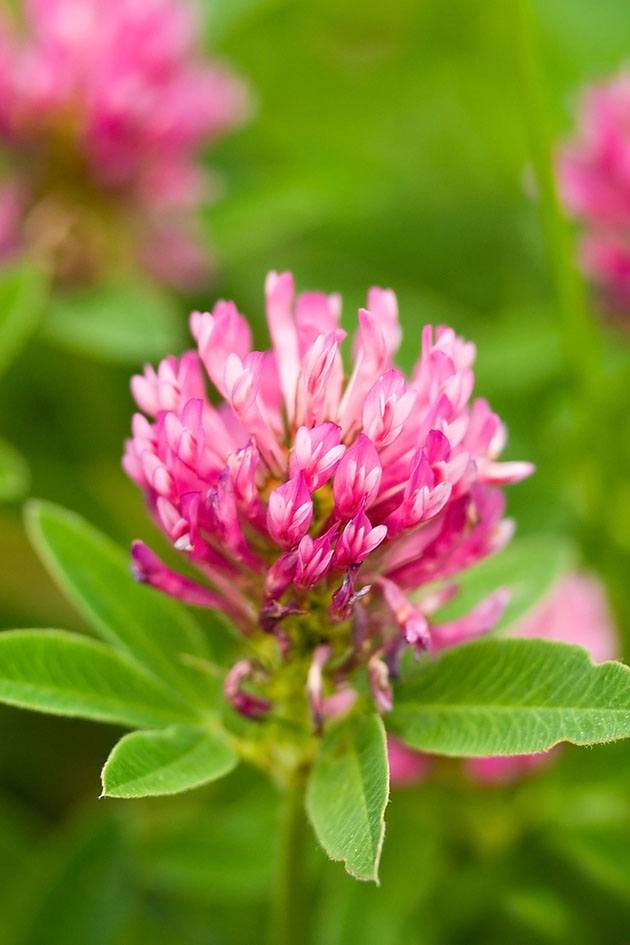
Choosing the Right Cover Crop for Your Garden/Farm…
I’ll be totally honest and say that choosing the right cover crop for your garden can be an overwhelming process if you are just starting out. Therefore, I strongly recommend you don’t do it alone. Pick up the phone and call your local cooperative extension agent. Talk to him/her about the problems in your garden and what you wish to solve with cover crops.
They most likely have written information specifically for your growing area. Planting dates, the best cover crops to use in each season, recommended mixes and more.
Since they’re involved with farms in your area they can probably connect you with local farmers that use cover crops in their operation and that can give you some very valuable information. Some of them will be kind enough to invite you over so you can see for yourself how they incorporate cover crops on their farm.
However, just so you have an idea of what questions to ask yourself when trying to decide the right cover crop for you, let’s go over a few things you have to consider…
Mixes – you are not necessarily looking for just one cover crop. Oh no, I just made things even harder, didn’t I?
Cover crops can be combined into a mix of three, four, or even more different kinds of crops. The combination can bring a much wider selection of benefits than using just one cover crop.
Identify Your Main Goal – ask yourself what is the main problem you are trying to solve.
Would you like to…
Add nitrogen to your soil?
Add organic matter and improve soil structure?
Prevent erosion?
Control weeds?
Manage nutrients?
Provide mulch?
Provide habitat for beneficial insects?
Provide ground cover for winter?
Maybe a few of the above?
Identify the Time of Sowing – just like with vegetable crops, cover crops are divided into summer and winter cover crops. It won’t do you any good to sow buckwheat in the middle of the winter because buckwheat is a summer crop. On the other hand, winter peas are not going to germinate and grow in the middle of summer.
So make sure you check the sowing dates for the crop you are interested in.
Full Sun or Shade Tolerant – are you planting in full sun or partial shade? Most likely in full sun, however, if you use the undersowing method to establish ground cover before winter, or to control weeds between rows of vegetables, you have to take into consideration that the growing cash crops are going to probably partially shade the cover crop that is growing under them.
Here are a couple of short videos that will give you an idea of how farmers incorporate cover crops with their growing system. Please remember that you don’t have to be a farmer to use cover crops. They will benefit a small garden just as well.
So let’s sum up this huge topic. Cover crops have so many benefits and can save you a lot of money on compost, soil amendments, organic matter and so on, but you are going to have to experiment a bit and find the right system for your garden.
It will probably take some more research, reaching out to local farms and to your cooperative extension agent to learn what grows best in your area, maybe the purchase of some sowing equipment, and a complete change of attitude, but once you figure out a system that works for you and your soil it will be worth it, you’ll notice this at harvest time.
The benefits of cover crops are simply too great to not consider incorporating them into your garden or farm especially if you are growing on a larger scale.
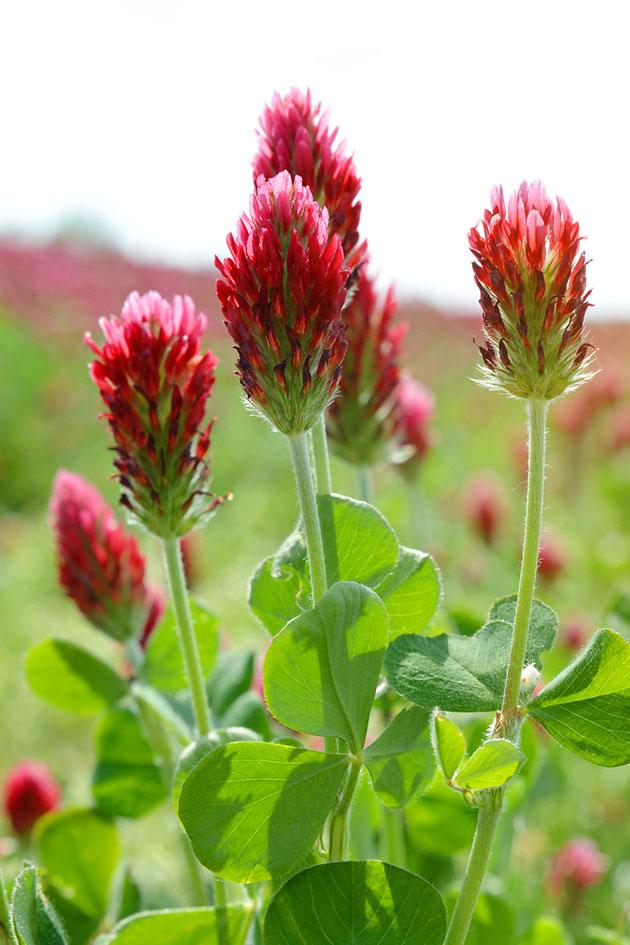
I’ve experimented a little bit with buckwheat and loved it. It’s an easy crop to plant and here in the South, it’s doing great in the hot summers. It’s beautiful to see the field full of white flowers and to see the pollinators buzzing everywhere.
The first time that I planted buckwheat I didn’t get to it in time and it went to seed. I collected some of the seeds and experimented with making buckwheat flour. That was an experience! You can read about it here.
Obviously, I wasn’t able to collect all the seeds so it seeded itself and grew again. The second time I was more prepared and tilled it under in time.
I also planted a field of clover a couple of years ago. It’s also really beautiful and the pollinators love it. In fact, it’s seeding itself and even though I mow it I can still see it trying to grow in my field.
Next, I would like to plant ryegrass in my smaller vegetable garden. My plan is to seed it at the end of summer and have it fully grown by the end of fall. It will stay there to cover the ground all through winter and I’ll simply plant into it in the spring. I am interested to see how this will work.
I hope this post about the benefits of cover crops and green manure helped you to understand a bit better how those crops are being used by farmers and how you can use them in a smaller garden.
I think that if you farm organically on a larger scale this is probably a must, but even if you have a small garden there are still so many benefits of cover crops that you might consider using them as well.
I’d love to hear your thoughts and to learn from your experience. Make sure to comment below!

Hi! I’m Lady Lee. I help homesteaders simplify their homesteading journey while still producing a ton of food! I am a single mother of four, I was born in Israel and raised in an agricultural commune called a Kibbutz. Now I homestead in central NC.

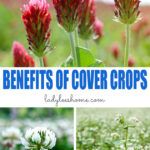




This is an excellent post, filled with great resources. Thank you for taking the time to share this! We are gardening on a much smaller scale, but I am starting to use cover crops and green manure as part of my garden rotation So far I have winter rye and hairy vetch that will be cut soon, we’ll see how it goes (fingers crossed). I also plan on using red clover and oats this coming season.
Bookmarking this page, thank you!
Thanks for the feedback! I am excited to start using cover crops in my farm. Still didn’t make a plan though, just all this research. Now I have to let it brew in my brain for a little bit before I come up with a plan.